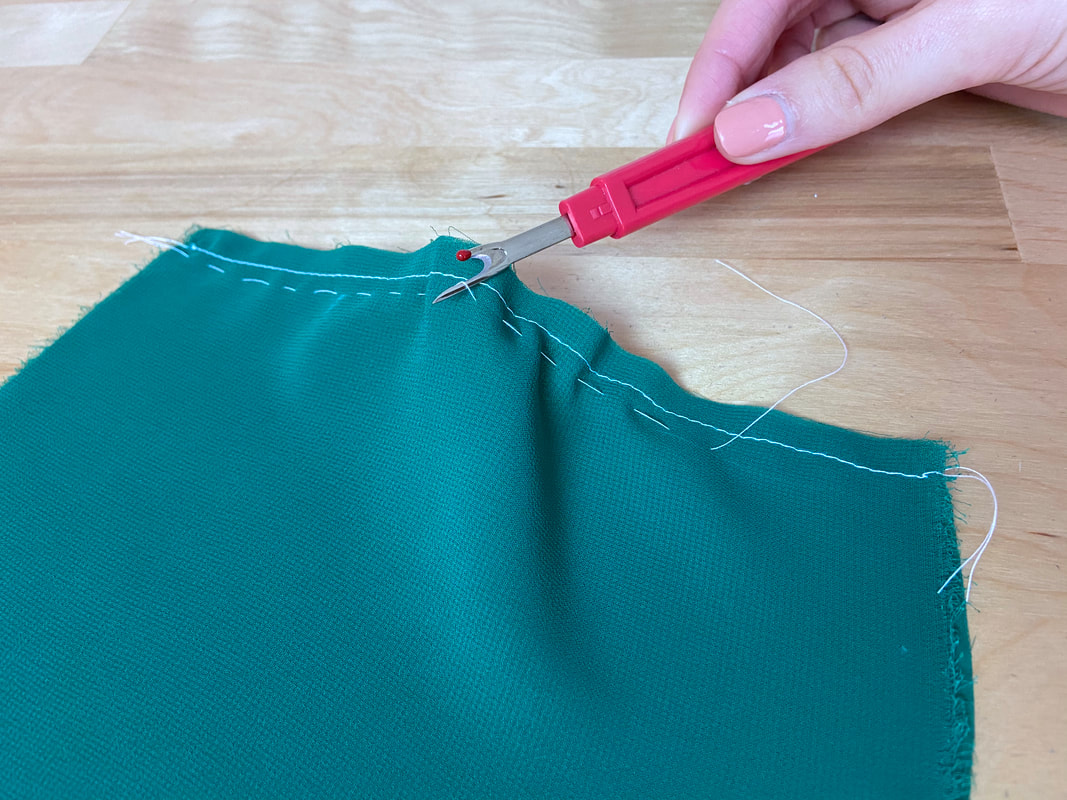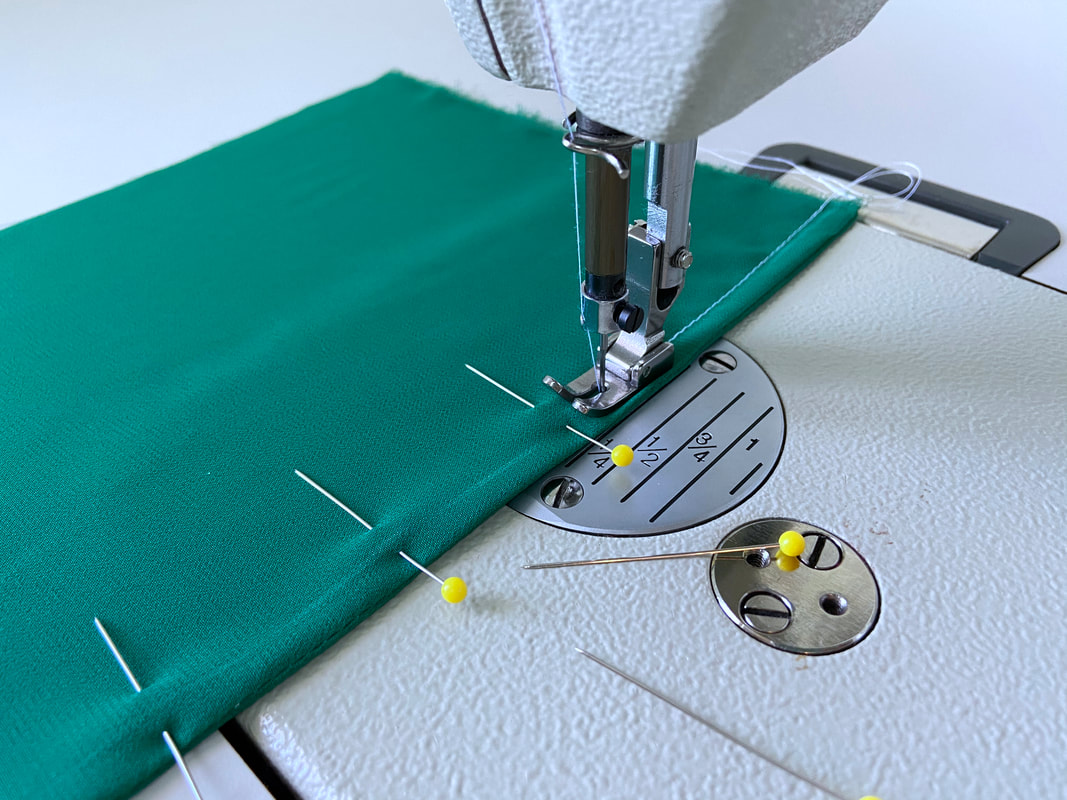What Is A French Seam
A French seam finish is very commonly used in dressmaking, particularly when clean-finishing lightweight, sheer garments with seam allowance that is semi-visible on the face of the garment. It is considered a classic technique for lightweight silk garments.
A French seam falls in the category of a self-enclosed finish, meaning that the seam uses the seam allowance alone to enclose its raw edges. There is no need for overedge stitches or attachments like fabric strips and bias binding.
In terms of most silk fabrics, a French seam finish is the best technique used to achieve a smooth, professional finish. Overedge finishes like serging or zigzag are not as aesthetically pleasing when used with silks. They also risk puckering or damaging the sensitive silk fibers in the stitching process.
A French seam is considered a high-quality finish and is constructed differently from a conventional seam.
While a standard seam is aligned with fabric face sides touching, a French seam is initially aligned with wrong sides touching. For that reason, you should be very careful when aligning the seam edges in preparation for sewing a French finish.
If you have already stitched the seam in a conventional fashion you won’t be able to achieve a regular French seam application. If you find yourself in this situation, you could either undo the stitch and restart, or apply a mock french seam instead.
The mock french seam finish is discussed in more detail here: Sewing A Mock French Seam
French seams require trimming of the seam allowance in the construction process. As you’ll see below, trimming the allowance to a shorter length prevents bulk in the final seam, encourages the seam to lay flatter, and makes the seam allowance layers easier to handle in the stitching process.
French seams are completed using two separate stitches, with the seam allowance trimming step preceding the second stitch. Prior to trimming, always check that the fabric pieces are aligned and sewn correctly.
Sewing A French Seam With Semi-Sheer Chiffon Fabric
Assuming the seam allowance is ½”:
1. Align the two seam edges together such that the fabric wrong sides are touching- fabric face sides should be on the outside of the alignment.
This is one of the very few instances when fabric wrong sides (not face) should be touching in the seam alignment process.
Pin the two fabric layers together perpendicular to the edge as shown. Apply a hand basting stitch (if needed) to provide extra stability during machine stitching.
2. Stitch the seam at ¼” (halfway through the seam allowance), backstitching at the beginning and end of the stitch.
If you hand basted the seam, remove the hand basting stitches once machine stitching is complete.
3. Using a good pair of scissors, carefully trim the seam allowance down to approximately three-quarter width. While your goal is to eliminate unnecessary excess, you should not cut too close to the stitch line as this may weaken the seam and cause it to come undone.
Aside from eliminating bulk, trimming the seam allowance at this point will ensure that when the second stitch is applied in the steps to follow, the fabric raw edges are completely contained within the self-enclosed finish, and no threads are peeking from the finished seamline and visible on the face of the garment.
As you’ll see below, when complete, the seam allowance raw edges point toward the finished seamline. For that reason, it is important to keep them as contained as possible during the stitching process.
4. After the seam allowance has been trimmed, iron the seam allowance edges open as shown.
5. Next, flip the fabric layers over the seam allowance such that the face sides of each fabric layer are now touching and the seam allowance edges are sandwiched in between. The initial stitch applied in Step 2 should correspond to the folded edge, and the fabric face sides should now be touching.
6. Iron directly on top the folded edge to stabilize it in this position.
7. Insert pins horizontally, perpendicular to the folded edge to keep the folded seam in place prior to stitching. Again, you may want to use hand basting for extra stability, especially if working with slippery, fine silk fabric.
8. Machine stitch the folded edge at ¼” allowance. As you stitch, keep the folded edge aligned to the ¼” seam allowance machine guide at all times. Backstitch at the beginning and end of the stitch.
9. As a final step, iron the stitching in the direction it was applied, then iron the finished seamline with the enclosed seam allowance layers pointing toward the back of the garment.
You may find it easier to iron from the face side of the finished seam but make sure to use a protective cloth if working heat-sensitive fabric.
The finished French seam application should look just as clean and professional on the inside of the garment as it does on its face side.





















